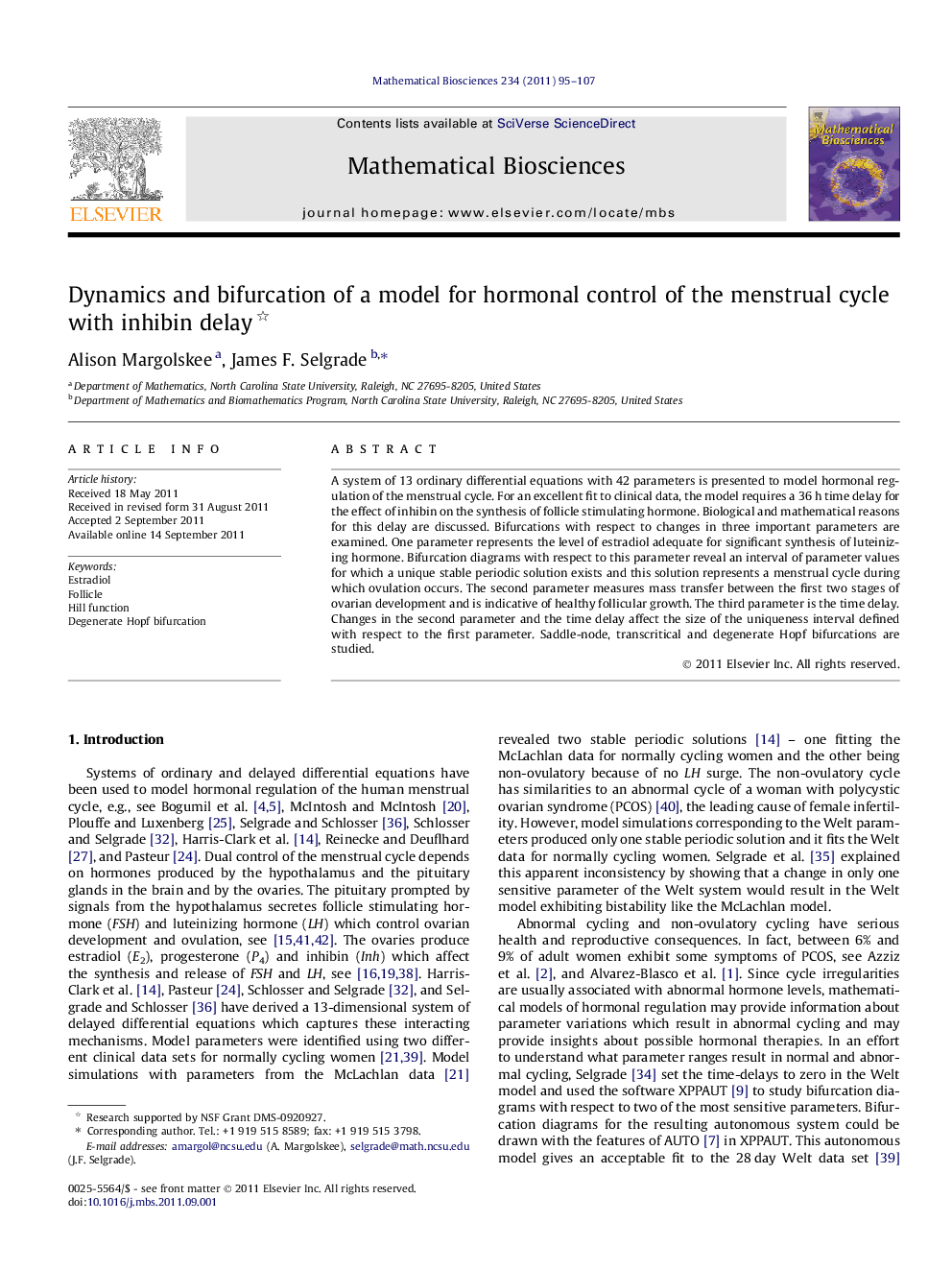| Article ID | Journal | Published Year | Pages | File Type |
|---|---|---|---|---|
| 4500409 | Mathematical Biosciences | 2011 | 13 Pages |
A system of 13 ordinary differential equations with 42 parameters is presented to model hormonal regulation of the menstrual cycle. For an excellent fit to clinical data, the model requires a 36 h time delay for the effect of inhibin on the synthesis of follicle stimulating hormone. Biological and mathematical reasons for this delay are discussed. Bifurcations with respect to changes in three important parameters are examined. One parameter represents the level of estradiol adequate for significant synthesis of luteinizing hormone. Bifurcation diagrams with respect to this parameter reveal an interval of parameter values for which a unique stable periodic solution exists and this solution represents a menstrual cycle during which ovulation occurs. The second parameter measures mass transfer between the first two stages of ovarian development and is indicative of healthy follicular growth. The third parameter is the time delay. Changes in the second parameter and the time delay affect the size of the uniqueness interval defined with respect to the first parameter. Saddle-node, transcritical and degenerate Hopf bifurcations are studied.
► We use differential equations to model hormonal control of the menstrual cycle. ► Including a time-delay for the effect of inhibin improves the model’s fit to data. ► Bifurcations with respect to changes in three important parameters are examined. ► Parameter ranges are observed where there is one stable ovulatory cycle. ► Healthy early follicular growth may result in a greater possibility of normal cycling.
